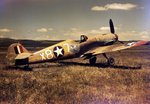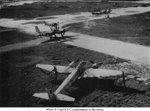johnbr
2nd Lieutenant
I have always loved the Ju-290 it is to bad the engines for it were not put in to production.I think it would have been great with the Ju-222 or DB-604 engines.
Follow along with the video below to see how to install our site as a web app on your home screen.
Note: This feature may not be available in some browsers.
Ad: This forum contains affiliate links to products on Amazon and eBay. More information in Terms and rules
Great stuff mate! Have a model of this girl in the stash...she is H-U-G-E!!!
Yep! need a new flat just for the model!
Great pics again, love that shot of the soldier guarding the Me 163! (diorama idea...)
Evan
All the collectors have the same problem mate. I posted some pics of my models in my thread "My collection"; take a look, I am sure you will enjoy it.










